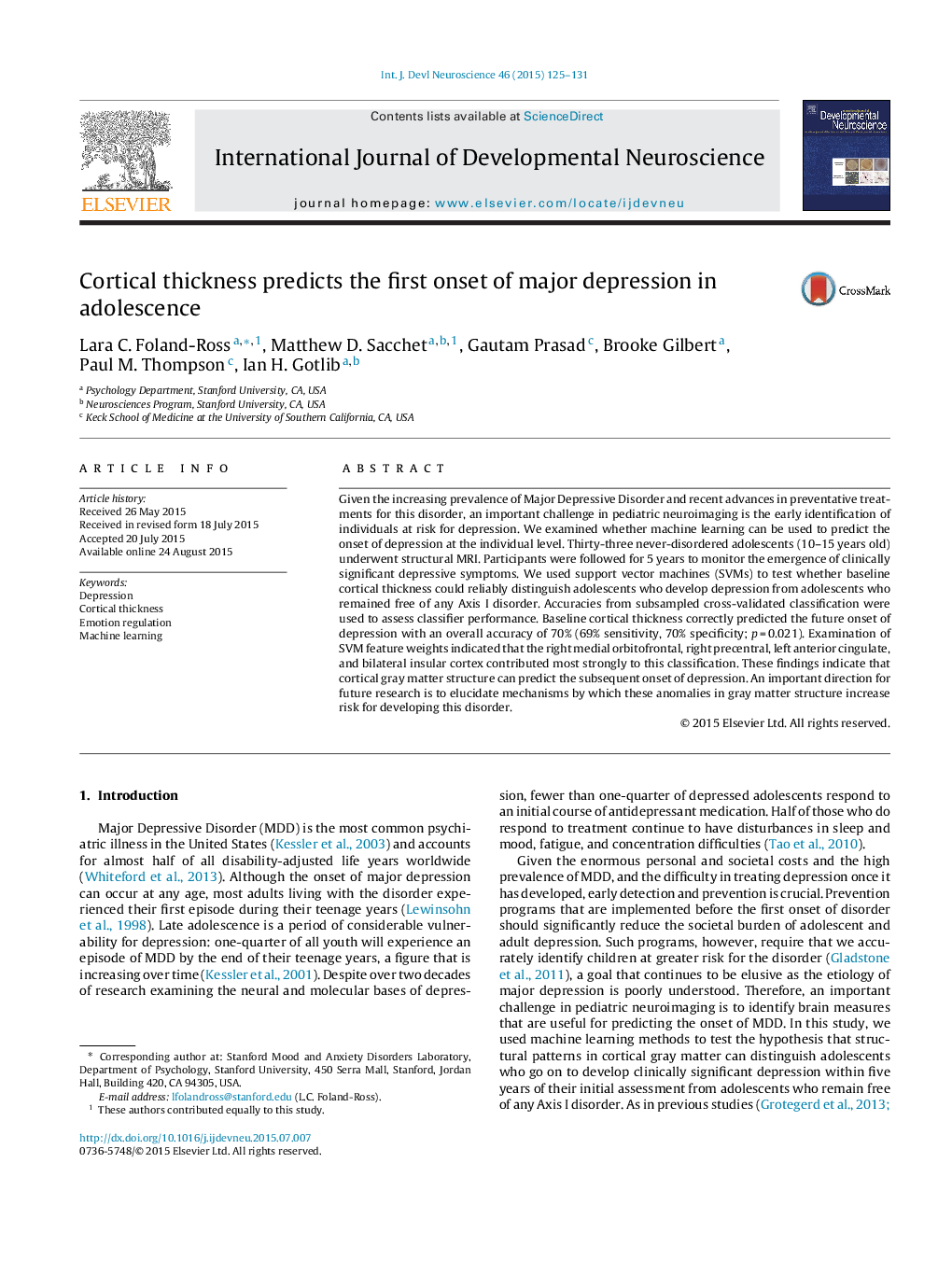| Article ID | Journal | Published Year | Pages | File Type |
|---|---|---|---|---|
| 2785700 | International Journal of Developmental Neuroscience | 2015 | 7 Pages |
•We examined whether cortical thickness predicts the onset of depression in youth.•We used machine learning to identify neural structures involved in this prediction.•Overall classification accuracy was 70% (69% sensitivity, 70% specificity).•The right medial orbitofrontal cortex contributed most strongly to classification.•Thus, cortical gray matter structure can predict the subsequent onset of depression.
Given the increasing prevalence of Major Depressive Disorder and recent advances in preventative treatments for this disorder, an important challenge in pediatric neuroimaging is the early identification of individuals at risk for depression. We examined whether machine learning can be used to predict the onset of depression at the individual level. Thirty-three never-disordered adolescents (10–15 years old) underwent structural MRI. Participants were followed for 5 years to monitor the emergence of clinically significant depressive symptoms. We used support vector machines (SVMs) to test whether baseline cortical thickness could reliably distinguish adolescents who develop depression from adolescents who remained free of any Axis I disorder. Accuracies from subsampled cross-validated classification were used to assess classifier performance. Baseline cortical thickness correctly predicted the future onset of depression with an overall accuracy of 70% (69% sensitivity, 70% specificity; p = 0.021). Examination of SVM feature weights indicated that the right medial orbitofrontal, right precentral, left anterior cingulate, and bilateral insular cortex contributed most strongly to this classification. These findings indicate that cortical gray matter structure can predict the subsequent onset of depression. An important direction for future research is to elucidate mechanisms by which these anomalies in gray matter structure increase risk for developing this disorder.
